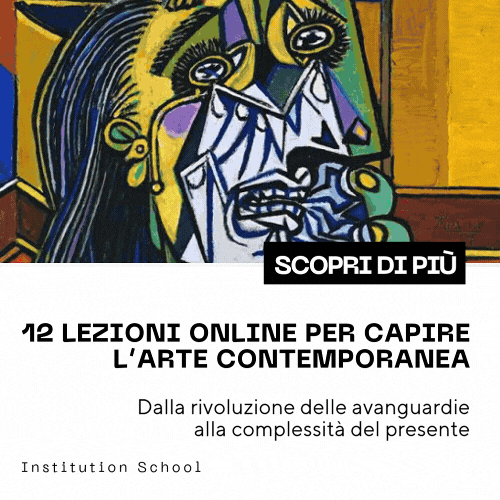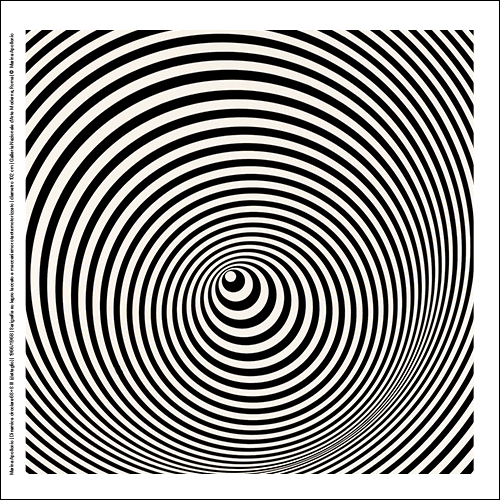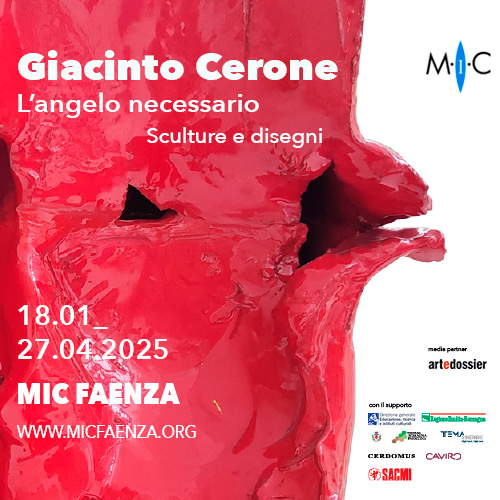Andrei Molodkin's political art on display in Barletta
Artist Andrei Molodkin was born in Russia and invests a large part of his artistic production in the creation of works with a strong conceptual value, and Victory of democracy, an exhibition running in Barletta until June 24, is a glaring confirmation of this. Part of the exhibition includes an environmental installation composed of iron letters, painted black, with overbearing fonts and dimensions (22x6x3 meters), which welcomes the viewer to the ravelin of the Norman Swabian Castle. The word that materializes is government.
The exhibition opened on April 24, a date that gives it considerable political-ideological relevance, in one of the Apulian provinces most active in resisting fascist rule during the 20-year Mussolini era. The letters are disjointed, confused, and the entire installation seems to be under construction, in fieri, and it is thus possible to grasp a subtle parallelism between the visual disconnect of the black letters with the contemporary Italian political condition. It is necessary to delve into the fortress (the dungeons in particular) once inhabited on various occasions by Frederick II, to take in the second part of the exhibition. The new atmosphere drops the works guarded by the castle complex into a solemn and collected atmosphere. The indoor installations, placed in three different rooms, are connected to each other by a system of cables, webcams, and projectors and are ideologically linked to the installation at the ravelin: the common thread linking the three works to the external production is definitely the Russian artist’s socio-political engagement, which resonates as a real leitmotif. The first room welcomes with soft, warm, reddish lights and rhythmic, cadenced noises echoing on the centuries-old walls and reminiscent of a tired, throbbing heart about to die out altogether, but still able to beat, like Western democracy, born with man himself and accompanying his exploits since its intellectually embryonic phase birthed in ancient Greece. The sounds in question are generated by a system of hydraulic pumps and compressors that feed blood inside transparent blocks of acrylic material, positioned in such a way as to form the word “democracy,” and in the space thus created human blood flows, creating an anxiety-inducing environment worthy of the filmography of director Dario Argento.
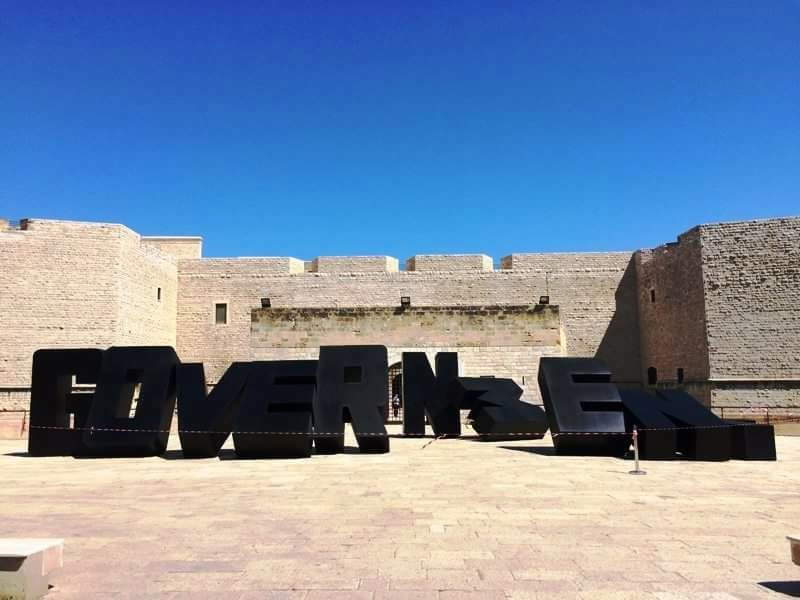 |
| Andrei Molodkin, image from the exhibition Victory of Democracy. Ph. Credit Barbara Conteduca |
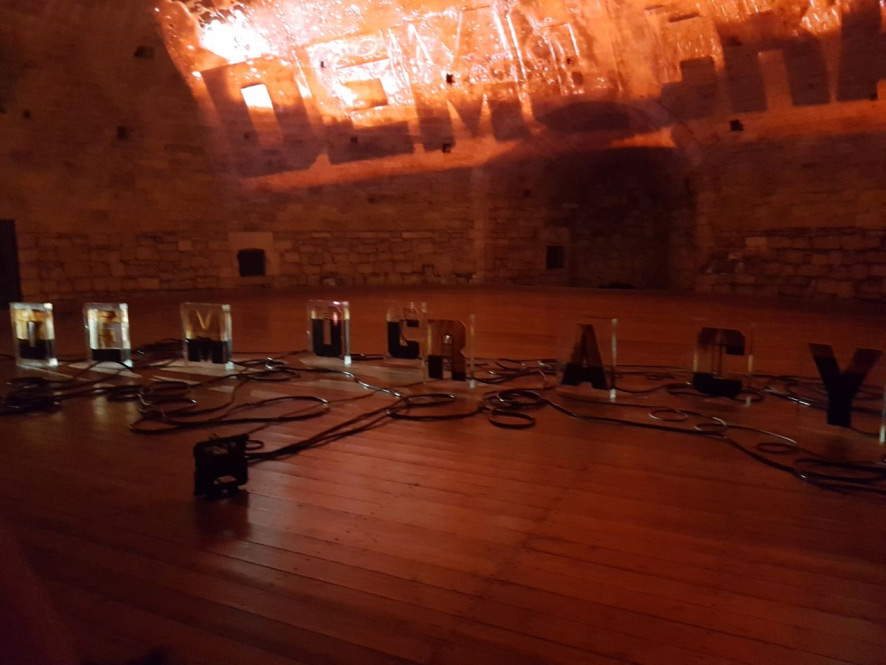 |
| Andrei Molodkin, image from the Victory of Democracy exhibition. Ph. Credit Barbara Conteduca |
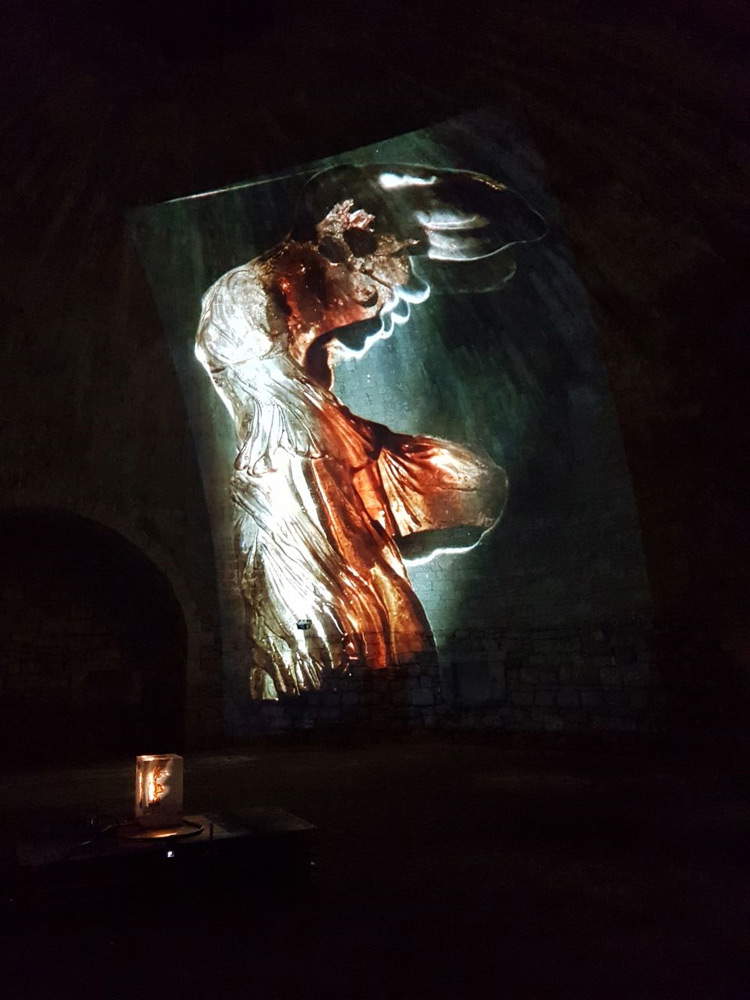 |
| Andrei Molodkin, image from the Victory of Democracy exhibition. Ph. Credit Barbara Conteduca |
Flanking the first complex sprinkled with blood is a hollowed and bloody twin depicting the Nike of Samothrace, the famous Rhodian school marble sculpture of the goddess of Victory (which recalls the title of the exhibition itself), as well as a symbol of Greek Hellenism, a period of strong cultural renewal and creative ferment, as well as of the entire Western artistic-cultural tradition that is the child of logocentrism and Greek canons.
Moving to the second room, there is the projection on the ancient walls, filmed by a webcam in real time, of the block of letters democracy, in which it is possible to notice the details of the blood fluid flowing in the letters as if they were veins; on the floor are lying transparent acrylic blocks, also letters that make up the word democracy, this time, however, injected with crude oil. A similarity between blood and oil in the artist’s language? Are they interchangeable hermeneutically? Reflecting on the power the West has wielded and still wields over the territories in possession of black gold, it is easy to see how Molodkin’s stance is radically critical, how oil is often more important than the blood of the victims it reaps and how it is stained with blood, the blood of the “damned of the earth,” recalling the title of the text by French philosopher Frantz Fanon, that is, those who suffer the violence of an overpowering power, who flee situations of conflict, receiving the label of immigrants. Democracy itself is stained with blood, and its victory, represented by the acrylic block sprayed and projected in the third room, is always a victory with broken wings, scarred, usurped, which will probably never be able to take flight again because of the demonic burden it drags in terms of human lives. Such a complex work induces problematization of the everyday datum, aims to sensitize the viewer, who is probably also a voter, about the conditions of violence, precariousness, extreme exploitation in which society finds itself because of global capital and financial oligarchies, two hundred years after the birth of the philosopher Karl Marx, and about the de facto implementation of a Plautin ethical regime, where man is wolf to the other, an anthropological condition, with Hobbesian overtones, of constant war of all against all.
Warning: the translation into English of the original Italian article was created using automatic tools. We undertake to review all articles, but we do not guarantee the total absence of inaccuracies in the translation due to the program. You can find the original by clicking on the ITA button. If you find any mistake,please contact us.






